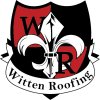Wind is one of the most common causes of roof damage, especially in areas like Louisiana, where strong storms and hurricanes are a part of life. While a single strong storm can cause noticeable damage, even moderate winds over time can weaken your roof and shorten its lifespan.
Understanding how wind damage impacts roof shingles—and what you can do to prevent and repair it—can save you thousands of dollars in long-term roofing costs.
How Wind Damages Roof Shingles
Wind doesn’t have to be hurricane-strength to damage a roof. Even winds around 40–50 mph can loosen shingles or lift edges enough to break the seal.
1. Shingle Uplift and Loosening
High winds create a vacuum effect on your roof, which can lift shingles at the edges. This breaks the adhesive seal that keeps them watertight. Even if shingles don’t blow off right away, once a seal is broken, water can seep underneath during rain.
2. Granule Loss
Asphalt shingles are coated with small granules that protect them from UV rays and weathering. Wind-driven debris or constant flexing of shingles during storms can cause granules to loosen and wash away. Over time, this leaves shingles brittle and more likely to crack.
3. Creased and Broken Shingles
When wind lifts and bends shingles, they often develop creases. A creased shingle has already lost some of its structural integrity and may break off completely in future storms.
4. Edge & Ridge Vulnerability
Shingles near roof edges and ridges experience the most wind pressure. If these areas are weak or improperly installed, they can be the first to fail—leading to progressive damage across the roof.
Signs of Wind Damage on Your Roof
Not all wind damage is immediately visible from the ground, which is why inspections are so important. Look for:
- Missing Shingles: Obvious patches where shingles have blown away.
- Lifted or Loose Shingles: Shingles that appear to be peeling back or not lying flat.
- Exposed Roofing Nails: Signs that shingles have shifted out of place.
- Granules in Gutters: Excessive granule buildup is a sign of surface damage.
- Damaged Flashing: Loose flashing around chimneys, skylights, or vents caused by high winds.
If you notice any of these signs, it’s best to schedule a professional inspection as soon as possible.
Long-Term Effects of Wind Damage
1. Water Intrusion
Once shingles loosen or blow away, rainwater can enter your roof system. Even small leaks can cause mold growth, insulation damage, and wood rot.
2. Reduced Roof Lifespan
Constant stress from wind—even if minor—weakens shingles over time. What could have been a 25-year roof might only last 15 years when frequently exposed to wind damage.
3. Increased Energy Bills
A compromised roof may allow air leaks and reduce insulation efficiency, leading to higher heating and cooling costs.
4. Risk of Catastrophic Damage
If minor wind damage goes unrepaired, future storms can cause entire roof sections to fail. A fully compromised roof during a storm can lead to severe water damage throughout the home.
How to Protect Your Roof from Wind Damage
1. Choose High-Quality Shingles
Impact-resistant or wind-rated shingles are designed to withstand higher wind speeds. When replacing or upgrading your roof, choose products rated for at least 110–130 mph winds.
2. Regular Roof Inspections
Having your roof inspected at least once a year—and after major storms—helps catch early damage before it spreads.
3. Reinforce Vulnerable Areas
Edges, ridges, and flashing should be securely fastened with high-quality sealants and nails. Professional roofers can reinforce these weak points.
4. Keep Trees Trimmed
Overhanging branches can cause additional wind damage by scraping against shingles or breaking off during storms.
5. Address Minor Repairs Quickly
Even small issues like a loose shingle or damaged flashing should be repaired promptly to prevent further damage.
What to Do After a Windstorm
- Perform a Visual Check: Walk around your home and look for missing shingles, debris, or visible roof damage.
- Check Your Attic: Look for water stains, leaks, or daylight coming through the roof boards.
- Contact a Professional Roofing Contractor: If there’s any visible or suspected damage, call a trusted roofing contractor like Witten Roofing for a detailed inspection.
- Document for Insurance: Take pictures of visible damage to support any potential insurance claim.
Does Homeowner’s Insurance Cover Wind Damage?
Most standard homeowner’s insurance policies cover wind damage, including shingle replacement or even full roof replacement if the damage is severe. Coverage may vary depending on your deductible, roof age, and policy terms, so it’s important to review your policy and contact your insurer promptly after a storm.
The Bottom Line
Wind damage may seem minor after one storm, but over time it can significantly shorten your roof’s lifespan and increase the risk of costly repairs. Regular inspections, prompt repairs, and choosing the right materials for your climate can save you money and protect your home for years to come.
If your home recently experienced strong winds or a storm, don’t wait—a quick inspection now could prevent thousands of dollars in future damage.
Frequently Asked Questions (FAQ)
1. How do I know if wind damaged my roof?
Look for missing or lifted shingles, debris on your roof, granules in your gutters, or water stains inside your attic. If in doubt, schedule a professional inspection.
2. What wind speed causes roof damage?
Even winds as low as 40–50 mph can loosen shingles, especially if your roof is older or already weakened. Severe storms with winds over 70 mph can cause widespread damage.
3. Should I go on my roof to check for damage?
No. Walking on your roof is dangerous and can cause more harm to shingles. It’s best to inspect from the ground and call a professional roofer for a detailed check.
4. Will insurance pay for a full roof replacement after wind damage?
It depends on your policy and the severity of the damage. Many policies cover full replacement if more than a certain percentage of the roof is damaged.
5. How often should I have my roof inspected?
At least once a year and after any major storm. Regular inspections catch small issues early and extend the life of your roof.
Protect Your Home with Witten Roofing
Wind damage can happen quickly—but the long-term effects can be avoided with immediate action. Witten Roofing specializes in roof inspections, emergency repairs, and full roof replacements.
Call Witten Roofing today at 855-516-8866 or schedule online for your free roof inspection and keep your home safe and secure year-round.




